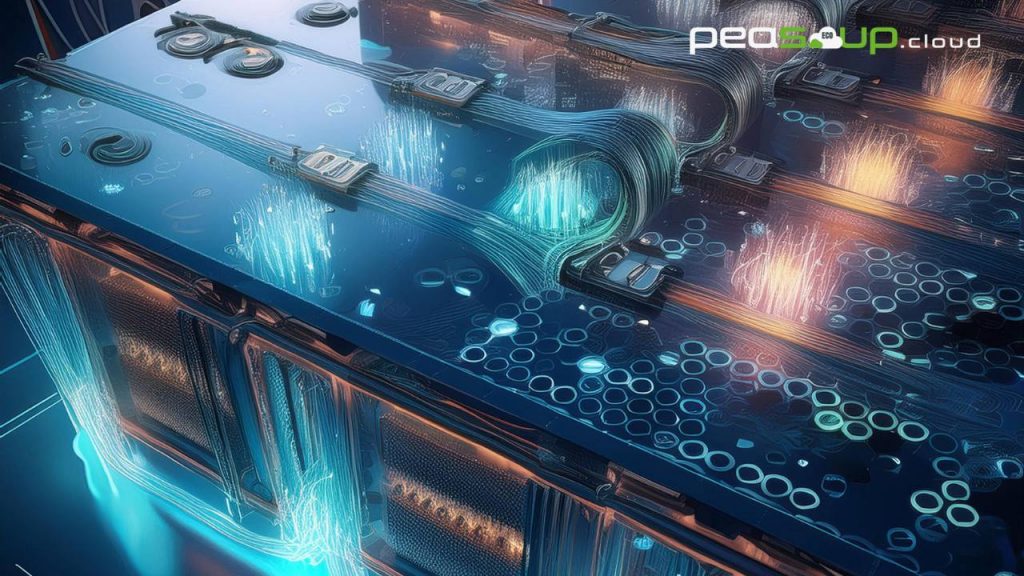Design and implementation considerations for liquid immersion cooling in data centres
As data centres struggle with rising power densities and the consequent heat generation, liquid immersion cooling emerges as the right solution offering significant efficiency improvements over traditional air-cooling systems.
Here, we dig into the essential design and implementation considerations for liquid immersion cooling, focusing on infrastructure requirements, fluid selection and safety considerations, and maintenance and operational protocols.
Infrastructure Requirements and Retrofitting Existing Data Centres
Implementing liquid immersion cooling in a data centre necessitates careful planning and significant infrastructure modifications. Unlike traditional air cooling, which relies on air circulation and heat dissipation through fans and air conditioning units, liquid immersion cooling involves submerging IT equipment directly into a thermally conductive dielectric liquid. This will require modifying servers by removing fans and other components not needed for liquid cooling or replacing them to ensure full compatibility with immersion cooling.
Designing New Data Centres
Integrating liquid immersion cooling from the outset allows for optimised space utilisation and efficient layout designs for new data centre builds. The primary infrastructure requirements include specialised tanks to hold the dielectric fluid and IT equipment. These tanks must be strong, leak-proof, and designed to allow easy access for maintenance and upgrades. Additionally, plumbing for coolant circulation, heat exchangers, and possibly secondary cooling loops to transfer heat to external cooling towers or chillers are necessary.
Retrofitting Existing Data Centres
Retrofitting existing data centres presents a unique set of challenges. The transition from air to liquid cooling requires removing existing air conditioning systems and installing immersion tanks. This process can be disruptive and requires meticulous planning to minimise downtime. Structural modifications may also be needed to support the additional weight of tanks filled with coolant. Adequate space must be allocated for immersion tanks and supporting infrastructure without compromising the existing IT equipment layout. Proper assessment of the building’s load-bearing capacity and floor reinforcement may be necessary to accommodate the increased weight.
Fluid Selection and Safety Considerations
Selecting the appropriate dielectric fluid is critical to the success of liquid immersion cooling. The fluid must efficiently transfer heat, be chemically stable, and be non-conductive to prevent short circuits.
Types of Fluids
Commonly used fluids include mineral oils, synthetic oils, and specialised engineered fluids. Each type has its advantages and limitations.
Selecting the correct types of fluids is primarily based on the viscosity of the fluid, its biodegradable properties, dielectric properties and expected lifespan.
Viscosity plays a significant role in determining the power required to pump fluids. Heavier fluids require more power to pump, which is why lower-viscosity liquids are preferred. The heat exchange properties also improve as the liquid becomes thinner. It’s important to consider the susceptibility of water contamination and its impact on the dielectric properties, as these factors can limit the lifespan of the liquid.
Safety Considerations
Safety is paramount when selecting a cooling fluid. The fluid must be non-toxic and environmentally friendly, minimising health risks to personnel and reducing environmental impact in case of leaks or spills. Fire safety is another critical consideration; hence, fluids with high flash points are preferred to mitigate fire hazards. Proper storage and handling procedures must be established to ensure the safe operation of the cooling system.
Maintenance and Operational Protocols
Effective maintenance and operational protocols are essential to ensure the reliability and longevity of liquid immersion cooling systems.
Regular Monitoring
Continuous monitoring of fluid temperature, quality, and levels is crucial. Sensors and automated systems can provide real-time data, allowing for prompt detection of any anomalies. Regular fluid analysis should be conducted to check for contamination or degradation, and the fluid should be replaced or filtered as needed to maintain optimal performance.
Cleaning and Maintenance
Immersion tanks and IT equipment should be periodically cleaned to remove any accumulated debris or contaminants. Maintenance schedules should be established to ensure that all components, including pumps, heat exchangers, and filtration systems, are functioning correctly. Proper training for maintenance personnel is vital to handling the equipment safely and efficiently.
Emergency Protocols
Developing and implementing emergency response protocols for fluid leaks, equipment failures, or other incidents is essential. These protocols should include immediate actions to contain and mitigate issues, communication plans, and procedures for equipment shutdown and repair.
Liquid immersion cooling represents a transformative approach to managing energy consumption, and heat in data centres, offering superior efficiency and performance. However, successful implementation requires careful consideration of infrastructure requirements, fluid selection, and maintenance protocols. By addressing these factors, data centres can leverage the benefits of liquid immersion cooling to enhance operational efficiency, reduce energy consumption, and improve overall reliability.

